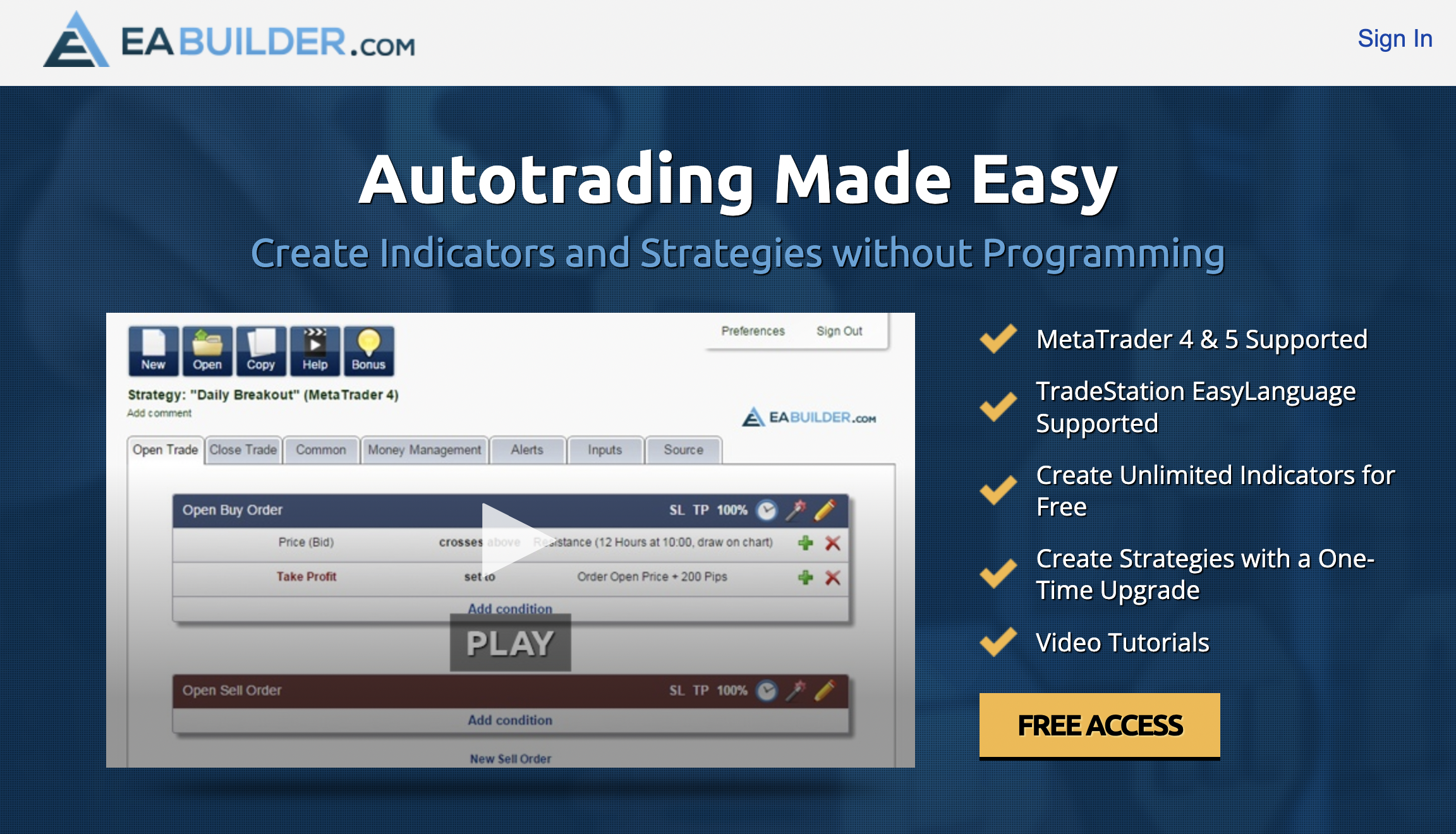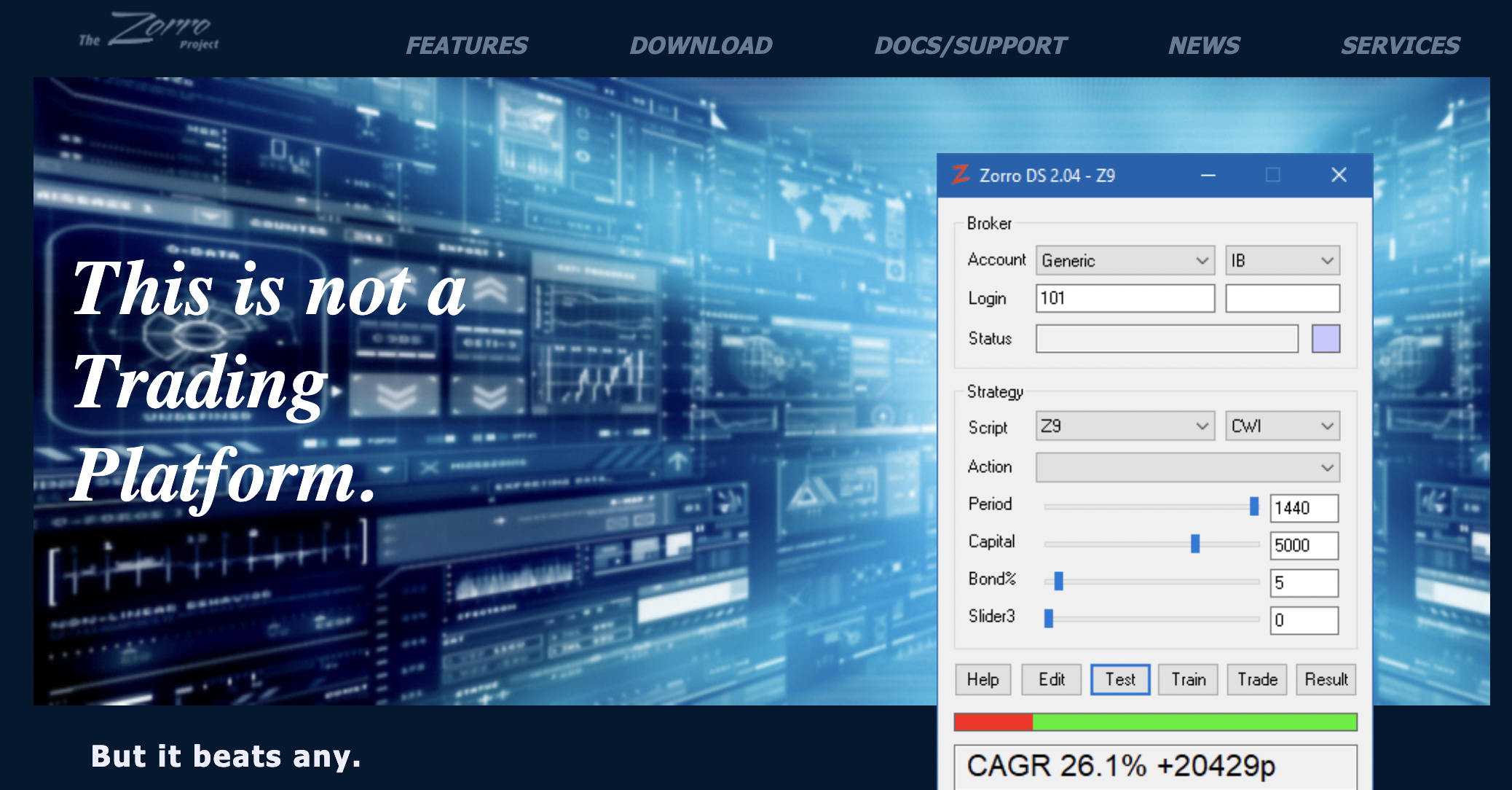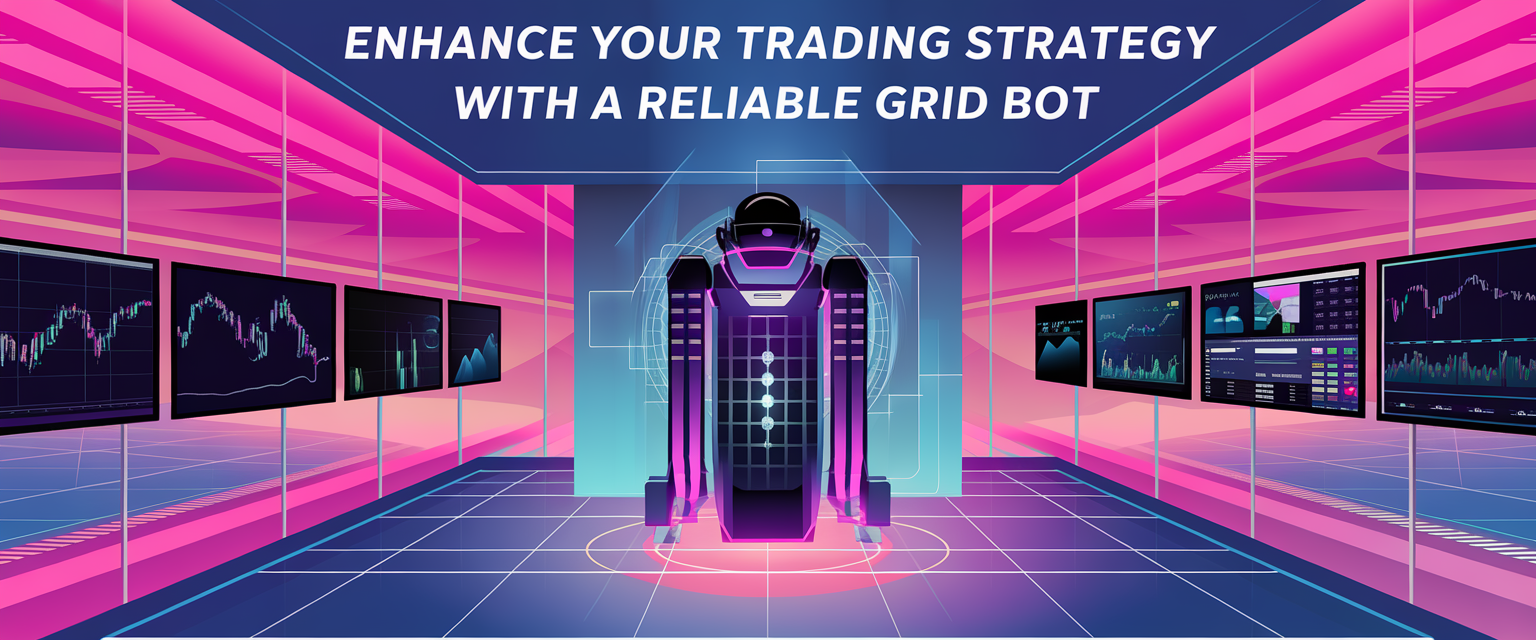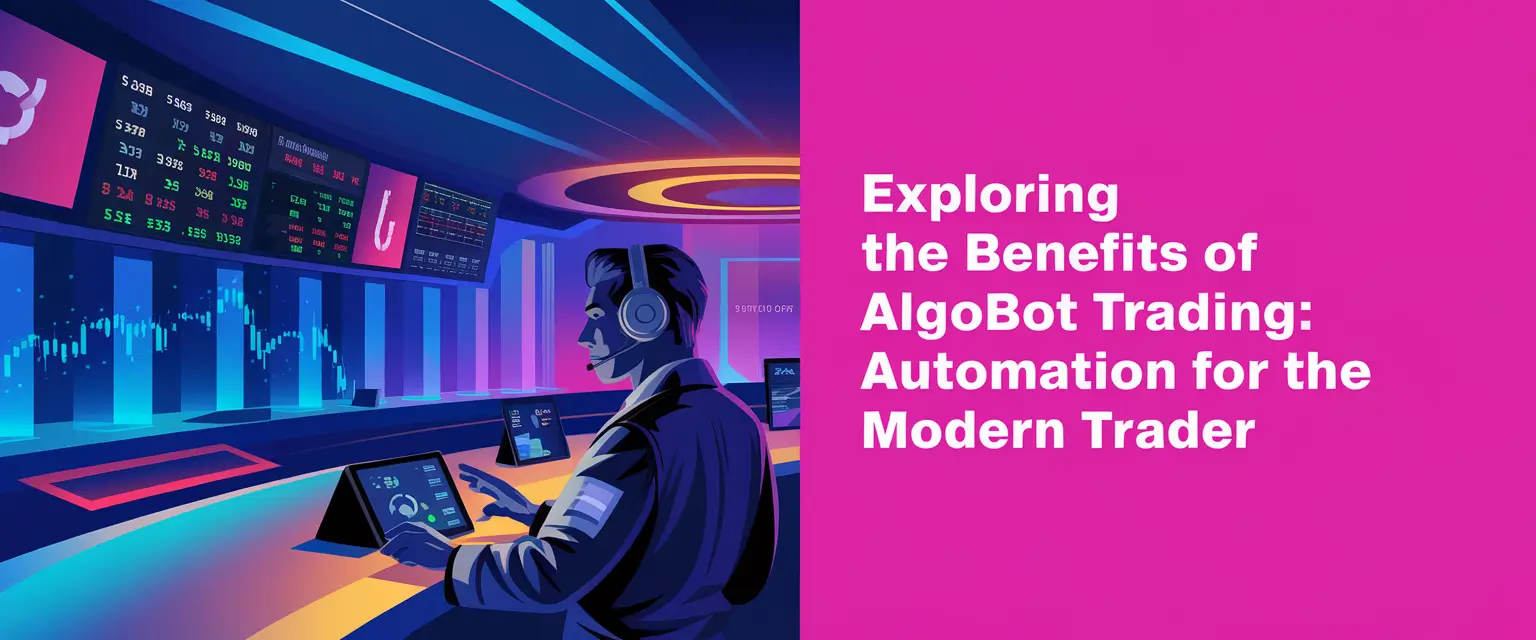Grid trading generates profits from market fluctuations within a set range. Trading bots help you automate this approach by buying and selling crypto at predetermined price levels.
In this guide, we explain how to use a grid bot to optimize your trading strategy. We also reveal the top grid trading bots in the market today, including their profit potential and risks.
The best crypto grid trading providers are summarized below:List of the Best Grid Trading Bots for 2025:
Top 10 Best Grid Bots of 2025: In-Depth Reviews & Comparisons
We’ll now take a closer look at how the top grid trading bots work, covering their performance, supported assets, features, fees, and more.
1. Algobot – Overall Best Automated Trading Bot for Multi-Asset Traders
Algobot, the best Algo Trading Bot, comes with a wide range of powerful tools to help traders succeed. It has an arsenal of 100+ technical indicators and an AI-integrated algorithm. Meaning, the bot will automatically identify the right strategy to find profitable trades. It’s also capable of adapting as the market moves.
Algobot lets you trade in auto-pilot mode. It’s fully autonomous but still gives you control over the risk exposure. Simply select the risk level and capital allocation – and you’re good to go. The bot also offers trading signals via Telegram, so you can place trades manually. There are also exclusive Algobot indicators available on TradingView for more experienced traders.

Algobot was thoroughly tested for three years and has a win rate of over 81%. Crucially, Algobot’s effective risk management helps mitigate losses. Moreover, Algobot is suitable for most asset classes, including crypto, stocks, forex, commodities, and indices. It integrates with all leading brokers and crypto exchanges.
The setup process is simple and merely takes minutes. Algobot offers a subscription-based service, starting at $50 a month for forex. For crypto traders, the monthly price increases to $59.99. Algobot also gives a 10% discount for annual subscriptions. All plans come with free updates and priority customer support.
Pros: Cons:
ByBit is a popular crypto exchange with thousands of tradable pairs. It offers a variety of trading solutions, including automated grid bots. These can be used in both spot and futures markets. Spot grid bots manage trades by buying low and selling high. They thus capitalize on short-term price fluctuations. Meanwhile, ByBit future bots can leverage positions by up to 100x, enabling traders to boost their potential earnings – albeit with increased risk. Both bot types can be used for long and short strategies. ByBit allows users to deploy up to 50 grid bots at the same time. The platform also offers copy grid bots created by other traders. ByBit offers detailed performance reports of prebuilt bots – making it easy to choose the right one. Orders are executed directly via ByBit’s trading platform. As such, you only need to pay the trading commission, which starts at 0.10%. In addition to grid bots, ByBit also automates DCA and Martigale strategies. Pros: Cons: AvaTrade is a regulated trading platform that supports many assets. This includes stocks, forex, crypto, indices, and commodities. It also connects with DupliTrade, a social trading platform. DupliTrade allows users to replicate the grid strategies of seasoned professionals automatically. It provides a curated list of expert traders whose performance has been thoroughly analyzed and vetted. Users can view each trader’s historical performance, risk levels, and style. Then, it’s only a matter of selecting a trader and assigning capital. After activating the copy trading bot, you can track its performance from your account. AvaTrade lets you create multiple copy trading bots to diversify the risk. However, the main drawback is the DupliTrade feature has a minimum investment of $2,000. Nonetheless, there’s no trading commission on AvaTrade, ensuring a cost-effective experience. Pros: Cons: StockHero offers trading bots exclusively for stocks. It lets you create your own grid bot or pick one from prebuilt templates. There are also grid bots developed by other users. These can be accessed on the StockHero marketplace. StockHero’s grid bot will close deals when all the buy/sell orders are filled. However, you can also choose to exit trades based on custom settings. For instance, you can specify the wait time or a breakout level for positions. These settings can be highly effective in reducing the risks of grid trading. StockHero is compatible with nine popular brokers – including TradeStation, Alpaca, and Webull. There’s also an AI chatbot that can instantly answer financial questions. StockHero’s grid bots are available via its Professional package at $99.99 a month. Users can get a flat 20% discount with an annual plan. StockHero is accessible via web browsers and its native mobile apps. Pros: Cons:
3Commas grid bots are specifically designed for sideways crypto markets. There are preset grid bots that follow predetermined rules and conditions. Users can evaluate the performance history of each bot, ensuring the chosen strategy aligns with your goals and risk tolerance. 3Commas also enables users to build grid bots from scratch. You won’t require any coding knowledge, meaning beginners are welcome. Instead, simply enter the parameters via a user-friendly dashboard. 3Commas also offers backtesting and risk management tools to optimize your bot. What’s more, the platform is compatible with all popular crypto exchanges. 3Commas also offers automated crypto portfolio management services. Another option is DCA strategies that turn signals into bots. In terms of pricing, 3Commas lets you use one grid bot for free. There are two paid plans for those who need more bots, costing $40 and $65 a month. Pros: Cons:
EA Builder enables users to develop forex trading bots. It’s accessible to traders regardless of their coding experience. The platform offers prebuilt grid strategy templates, which are ideal for newbies. You can also fine-tune these templates to your specific needs. For instance, you can specify the lot size and risk percentage per trade or choose between Martingale or Anti-Martingale grid strategies. It’s also possible to limit the trade duration or number of positions. EABuilder also offers standard indicators and tools, such as trendlines, support/resistance levels, and more. Other features include custom alerts, money management tools, and the capacity to backtest strategies. EA Builder bots are compatible with MT4 and MT5 platforms, plus TradeStation. The free version enables an unlimited number of indicators. While the paid upgrade, priced at a one-time fee of $97, unlocks bot building. Pros: Cons:
KuCoin is a reputable crypto trading platform. It offers an innovative ‘Infinity’ grid bot that can resolve the issue of price breakouts in a bullish trend. The bot removes the upper price limit, allowing traders to profit when the crypto price increases. It then cashes out small amounts to lock in the gains. This maintains a steady grid strategy with risk-averse protections. That said, the bot runs indefinitely if the market price stays above the trader’s set lower limit. Users can start by selecting the trading pair, minimum price, and profit rate per grid. Although the setup process is easy, the specific strategy can be a bit complicated fo beginners. However, KuCoin also offers a spot grid trading bot. This is more suitable for first-timers. There’s also a futures grid trading bot that can be used in both bullish and bearish markets. Best of all, bots are free for KuCoin users. The standard trading commission is just 0.10%, which can be lowered holding the KCS token. Pros: Cons:
TradeSanta is another platform with preset grid bots tailored for the crypto market. You can start by choosing your preferred crypto pair and whether you want to go long or short. TradeSanta also lets you customize the grid percentage, maximum number of orders, and capital size. There are also risk management tools such as stop-losses. Or adding signals from indicators to halt the bot entirely. All in all, the process is straightforward and suitable for novices. Grid trading bots are available for both the spot and futures markets. Moreover, TradeSanta bots can be monitorered via its proprietary mobile app. Another benefit is that TradeSanta works with all major crypto exchanges. You can also test your bots via demo accounts until you gain confidence. TradeSanta bots are available from $25 a month. You can pick a plan depending on the number of bots you wish to run simultaneously. Pros: Cons:
Cryptohopper is known for its automated trading bot capabilities. Whether you’re a newbie or a professional, this platform has features that cater to you. For those new to grid trading, you can copy a strategy from an expert. That strategy can be converted into an automated bot. On the other hand, if you’re a professional, Cryptohopper offers a strategy designer and backtesting tools. You can also test your grid bot via paper trading accounts. There’s even an AI trading bot that plans your entire strategy and learns from market conditions. You can also find grid bot templates and strategies on the Cryptohopper marketplace. These can be customized to your risk preferences. The monthly subscription package starts at $29 a month. There’s also a three-day trial period available for paid packages. Pros: Cons:
The Zorro Project is an algorithmic bot-building tool catering to tech-savvy traders. You can use this platform to develop grid bots with C or C++. It also facilitates data collection and financial research. Bots can be used for stocks, forex, crypto, ETFs, and even derivatives. The platform has made everything customizable. Right from the grid bot’s user interface to the strategy parameters. It also comes with strong backtesting capabilities and machine learning integration. The latter can be exported via an algorithmic code. You can also link the bot to your preferred broker via APIs or feed protocols. The Zorro Project also offers 300+ indicators, pattern recognition, and signal processing. It’s also equipped with a visual debugger. The Zorro Project is free to download. However, a subscription offers access to additional features – such as plugins and a removal of account limits. Paid plans start at €35 (around $38) a month. Pros: Cons:
In grid trading, you place multiple buy and sell orders at fixed intervals. This creates a grid of orders at progressively increasing or decreasing price levels. This essentially forms a trading ‘grid’, hence the name. In practice, the first step is to determine the grid’s price range. As the market oscillates within this range, the corresponding orders are executed. Grid trading is considered to be most effective in a sideways market. When range-bound, the asset’s price often oscillates between two levels – without a strong trend. In simple terms, a grid bot operates by setting up a mesh of buy and sell orders at specific price intervals. The key advantage is that the bot can function non-stop, ensuring that trades are executed without manual oversight. Moreover, grid bots are also capable of adjusting to market fluctuations. For instance, they continuously adjust orders as trades are executed. Here’s a simplified example of how grid bots work: This process continues, with the bot buying low and selling high. If the market moves out of the defined range, the stop-loss orders will be triggered. This prevents users from extended losses. Grid trading bots differ based on their underlying strategy. In this section, we take a look at the different types of grid bots available. In this grid trading strategy, the bot executes orders at predefined levels – regardless of market fluctuations. In other words, the bot maintains a consistent grid structure. It doesn’t adjust orders to any market changes. This approach ensures that trades are systematically executed according to the predefined grid. Another grid bot strategy gaining attention is the Martingale. Let’s suppose that a loss occurs during a grid trade. The Martingale bot increases the size of the next order. The aim is to recover losses and secure a profit when the market changes direction. This technique can be profitable in markets experiencing frequent reversals. However, it also involves higher risk. There are also Reverse Martingale grid trading bots. As mentioned, Martingale bots increase the order size once a loss occurs. However, in the reverse strategy, the positions are amplified after a win. This approach aims to capitalize on winning streaks. Trailing grid bots are designed to adjust the grid levels dynamically based on market movements. When the price trends in one direction, the trailing grid bot ‘follows’ the market. In other words, it moves the grid along with the trend. For example, if the market is on a steady upward trajectory, the bot will shift the buy and sell orders higher. This way, the bot capitalizes on the ongoing trend without reverting to outdated grid levels. Similarly, in a downward trend, the bot trails the market lower. Thereby, it maintains trading efficiency in rapidly changing conditions. As the name suggests, these bots integrate AI and machine learning. They can interpret market data to recognize patterns. This aspect allows the bot to optimize the grid parameters based on predictions. Algobot is one example of an AI-based trading bot. It makes real-time trading decisions based on current and historical data, ensuring it’s well-prepared for sudden market reversals. Still not sure if grid trading bots are right for you? Let’s take a closer look at their core benefits. The grid trading strategy is inherently simple. It doesn’t require complex indicators to predict market direction. Instead, a grid bot can be programmed without understanding algorithms. This makes it more accessible to beginners and easier to automate. Furthermore, grid trading is also versatile enough to adapt to bespoke strategies. There are different types of grid trading bots for varying risk levels. So traders can adjust the strategy to their needs. The grid trading strategy can be applied to various asset classes. For stocks, a grid trading strategy is a great way to profit from range-bound periods. Crypto and forex markets have high volatility and liquidity – also making them suitable for grid bots. This adaptability means they can be configured to work across different exchanges and platforms. Moreover, you can also diversify risk more effectively. Another advantage of grid bots is that they’re flexible. No matter the investment size – grid bots can be tailored to suit your financial goals. By adjusting the grid size and the capital allocated, you can customize the bot’s performance to match your risk profile. This flexibility makes grid bots suitable for both conservative and aggressive traders. With grid trading, there’s no requirement to try and predict the market. Instead, you can take advantage of volatile market conditions without being speculative. Moreover, there’s no emotional quotient involved with bots. After all, bots follow strict pre-programmed rules, reducing the impact of emotions such as fear and greed. This leads to a more disciplined strategy, helping avoid hasty decisions. The grid strategy also has some downsides that traders should be aware of. These are discussed in the sections below. A grid bot works best in sideways markets. This means prices move up and down within a range – thus executing the buy and sell orders from the grid. This way, it captures profits from the recurring price movements. However, in trending markets, prices move consistently in one direction. Therefore, the grid bot’s effectiveness diminishes. The bot may only execute trades in one direction. A strong trend can lead to significant losses if the grid doesn’t align with the trend movement. Grid bots can also struggle in markets with rapid price swings or false breakouts. For instance, a sudden market reversal can trigger buy or sell orders prematurely. Likewise, false breakouts happen when the price momentarily breaches the grid’s range before retreating. These scenarios can result in multiple trades at unfavorable prices. This can potentially reduce profits and increase losses. The grid trading strategy is a simple concept. However, configuring the grid parameters requires some careful consideration and skill. This means grid trading isn’t entirely suitable for complete beginners. For instance, you need experience to determine the right range, grid spacing, and risk management strategies. Moreover, the trading market is never static. Therefore, you’ll need to evaluate the bot and readjust its parameters regularly. Grid bots tend to place frequent buy and sell orders to capture small price movements. This high trading activity can result in significant trading costs, such as spreads and commissions. On top of this, the best grid bots charge fees. These should be built into your return on investment As such, these costs can deteriorate the overall profitability. This can be worsened by low-volatility markets where fewer opportunities arise to offset the expenses. This last limitation is standard to all bots, not only for grid trading. When configuring bots, especially through backtesting, traders may optimize their parameters too closely to past market data. This overfitting can lead to strategies that perform well in historical simulations but fail to adapt to live market conditions. As a result, the bot may struggle to replicate past performance – leading to suboptimal results. Now that we’ve discussed grid bots extensively, let’s look at the setup process. While grid bots can vary in type, the core principles remain consistent. Here’s a step-by-step overview of the general process: The first step is to define the grid’s price range. This will require some market analysis. For example, you can use technical indicators like the Fibonacci to define the supports and resistance zones. The spacing between the range will be determined based on your risk-reward preferences. For instance, tighter spacing between levels might capture more frequent, smaller price movements. This leads to more trades. On the other hand, wider spacing can reduce the number of trades. It also captures larger price swings. The next step is to specify the order types. Grid bots typically use limit orders, as they’re executed at predefined levels. After you’ve defined the grid parameters, the bot automatically places the orders at multiple levels. As the price changes, the bot dynamically adjusts its buy and sell orders. For instance, if a sell order is executed after a price increase, the bot places a new buy order at a higher level. Proper position sizing is also critical for grid bots. You can allocate position sizes based on your overall risk appetite and fund balance. For instance: This ensures your grid strategy can adapt to upward and downward market movements while managing risk effectively. You should also consider the number of grids in your strategy and ensure that there are sufficient funds. Grid bots enable you to take a hands-off approach to risk management. They let you set up stop-loss orders in advance. In grid trading, stop-loss orders are placed as follows: These are highly beneficial to exit positions if the market breaks out from the expected range. This proactive measure helps safeguard your capital. Grid trading bots are powerful tools for capitalizing on market volatility, particularly in range-bound conditions. They also offer automation, meaning trading and risk management orders are executed passively. However, grid bots are not so useful in trending markets. Nonetheless, Algobot leverages AI algorithms to find the right strategy. It handles everything from market analysis and order placement to risk management. Additionally, Algobot can be used on multiple assets, including stocks, crypto, forex, and indices.
A grid strategy places buy and sell orders at set intervals around a base price. The aim is to profit from market fluctuations within a range without predicting price direction. A grid trading bot sets up a series of buy and sell orders at different price levels within a predefined range. As the market moves, it automatically executes these orders, profiting from price fluctuations. Grid bots can be profitable in range-bound markets with volatility. However, their success depends on the underlying strategy and parameters.. Grid trading is risky in trending markets, where the bot may execute trades in one direction. However, risks can be mitigated with proper stop-loss orders and careful grid configuration.
2. ByBit – Grid Trading Bots That Leverage Crypto Futures by Up to 100x

3. AvaTrade – Copy Grid Trading Strategies from Other Users

4. StockHero – Use the Grid Trading Strategy for Sideways Stock Markets

5. 3Commas – Access Dozens of Crypto Grid Bots From an In-Built Marketplace

6. EA Builder – Build Grid Trading Bots for the Forex Markets

7. KuCoin – Infinity Grid Bots for Bullish Crypto Markets

8. TradeSanta – User-Friendly Bot Builder With Preset Crypto Grid Templates

9. Cryptohopper – Grid Bot Tools for Traders of All Levels

10. The Zorro Project – Develop Algorithmic Trading Bots for Grid Strategies

What is the Grid Trading Strategy?
How Does a Grid Trading Bot Work?
Types of Grid Trading Bots
Fixed Grid Trading Bots

Martingale Grid Trading Bots
Trailing Grid Bots
AI-Powered Grid Trading Bots
Advantages of Grid Bots
Simplicity and Versatility
Applicable to Multiple Assets

Flexible Strategy
Emotionless Trading
What are the Limitations of Grid Bots?
Suited for Range-Bound Markets
Vulnerable to False Breakouts
Learning Curve for Beginners

Exposure to High Transaction Costs
Risk of Overfitting
How to Find the Best Grid Bot Settings?
Step 1: Grid Setup
Step 2: Order Placement
Step 3: Position Management
Step 4: Stop-Loss Orders
Final Thoughts on Grid Trading Bots
FAQs
What is a grid strategy?
How does a grid trading bot work?
Are grid bots profitable?
How risky is grid trading?








